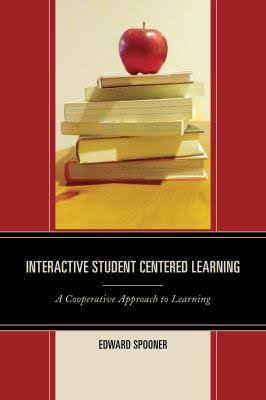Interactive Student Centered Learning: A Cooperative Approach to Learning
Edward Spooner. Rowman & Littlefield Publishers, 2015, 188 pp. Principal, March/April 2016
 Edward Spooner.
Edward Spooner.
Rowman & Littlefield Publishers, 2015, 188 pp.
Principal, March/April 2016
“The great thing about education is that the mindset about teaching and learning is constantly evolving.” One might think that this is a quote from mindset guru Carol Dweck. It’s not—it is the premise of Interactive Student Centered Learning. Author Edward Spooner takes readers through the history of different learning and teaching styles (from traditional to constructivist), ending with what he feels is the best way to learn and teach: interactive student learning.
The book is divided into six distinct sections and is heavily based on research. The first section, “The Learning Process,” is a review of the theories of learning similar to the philosophy of education courses we took in college. Piaget and his constructivist views are even mentioned.
Spooner, a long-time secondary teacher, uses his research and experience as an educator to discuss the pros and cons of the traditional views of teaching and learning by comparing it to student-centered learning (SCL). This flows into the next section in which he discusses the most used SCL methodologies: active learning, cooperative learning, collaborative learning, and constructivist learning. In each of these chapters, the instructor’s role is addressed along with keys to remember and potential problems. I particularly enjoyed the “potential problem” section in each of these chapters because it allows teachers to be proactive when implementing these theories in the face of the pitfalls.
The fourth and fifth sections, Spooner’s main purpose of the book, are a deep dive into SCL. The chapters explain how educators can actually implement SCL into the classroom, explaining the process and including assessment ideas. As research has proved in recent years, students do not truly learn from a “sit and get” model, but need to talk about, write about, and apply what they are learning to make it relevant and to retain the information.
Although this book is more pertinent for secondary school education, I believe all teachers—with support from their principals—can use SCL techniques so that students become active members of their learning environment. By applying these techniques, students will be able to be truly engaged in the learning process, resulting in high student motivation and achievement.
Reviewed by Jenny Nauman, principal of Shields Elementary School in Lewes, Delaware.
Copyright © National Association of Elementary School Principals. No part of the articles in NAESP magazines, newsletters, or website may be reproduced in any medium without the permission of the National Association of Elementary School Principals. For more information, view NAESP’s reprint policy.

